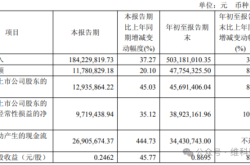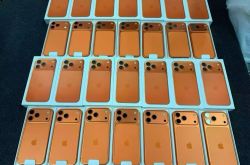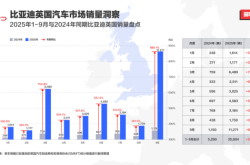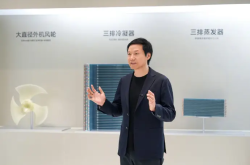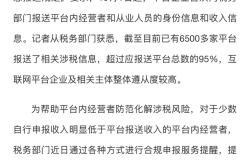Revolutionizing Auto Operating Systems in AI Era: NIO's "SkyOS·TianShu" and Li Auto's XingHuan OS
![]() 03/31 2025
03/31 2025
![]() 506
506
Produced by Zhineng Technology
NIO's "SkyOS·TianShu" full-vehicle domain operating system and Li Auto's XingHuan OS epitomize China's ascendancy in vehicle operating systems, positioning them as global leaders.
These two operating systems have supplanted traditional foreign systems like AUTOSAR, laying the technical groundwork for smart electric vehicles in the AI era.
This milestone is indeed cause for celebration. Let's revisit the journey of "SkyOS·TianShu".
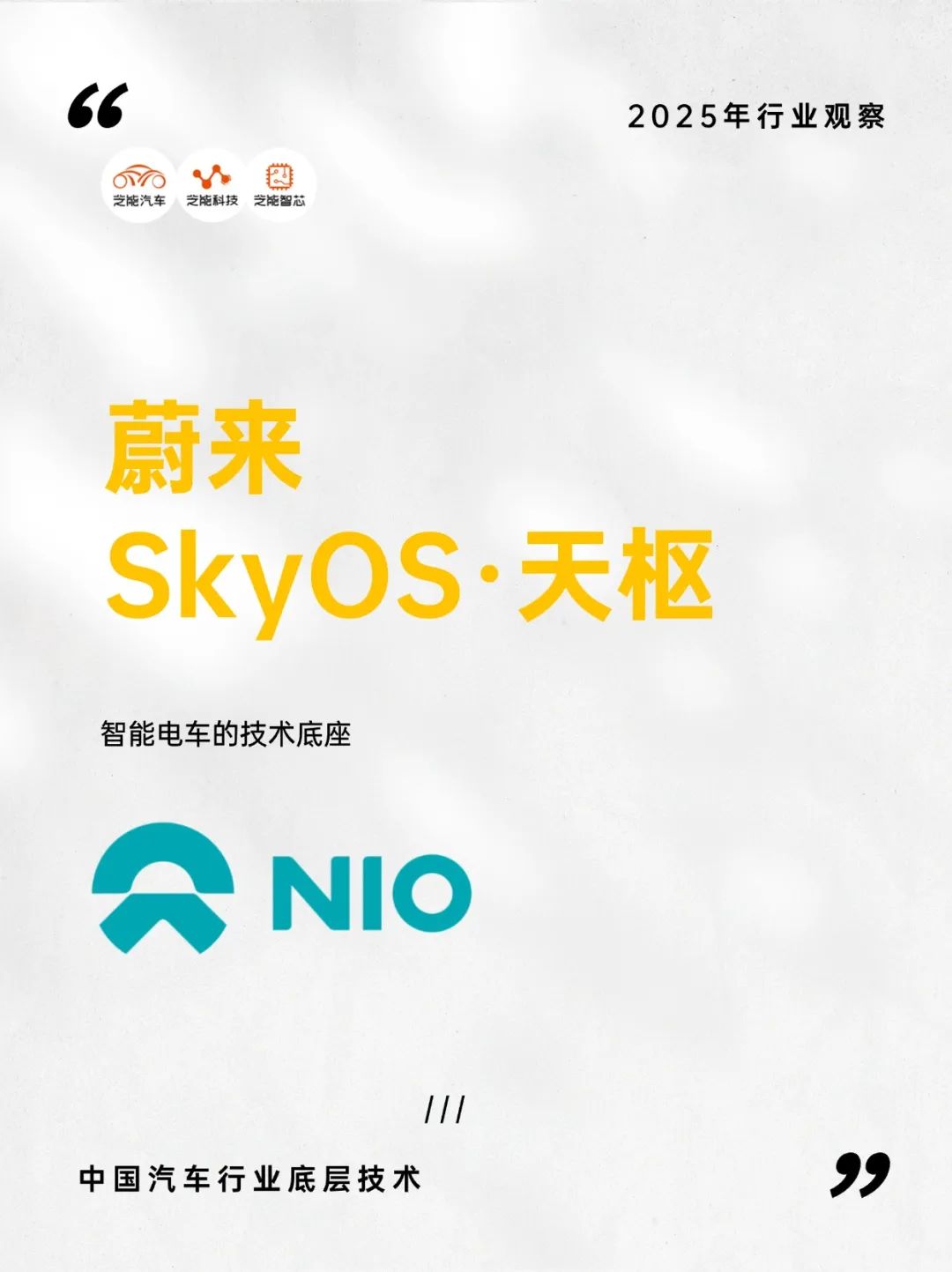
01
Navigating Complexity and Innovation in R&D
The development of "SkyOS·TianShu" was a technological odyssey, marked by intricate layers of complexity and innovation. A full-vehicle domain operating system necessitates deep decoupling of hardware and software, coordinating tens or even hundreds of ECUs within the vehicle.
AUTOSAR, the distributed architecture-based operating system of the traditional fuel vehicle era, struggles to meet the demands of smart electric vehicles for high computing power, low latency, and cross-domain integration.
Take NIO's NT2 model as an example. Its 33 high-performance sensing hardware generates around 10GB of data per second. A mere 0.03-second increase in communication delay can extend the high-speed braking distance by 1 meter. This stringent requirement for real-time performance and data throughput necessitated a ground-up reconstruction of the operating system by NIO.
● SkyOS TianShu, an advanced smart car operating system, boasts a plethora of robust functional modules:
◎ SkyOS - H creates a high-performance virtualized hardware resource pool for high-computing, low-latency applications, facilitated by multi-scenario optimization and a highly reliable virtual machine monitor.
◎ SkyOS - R achieves end-to-end real-time optimization with data closed-loop capabilities, processing over 1000 real-time data types, performing over 10,000 logical event matches, and boasting trillions of processing capabilities daily.
◎ SkyOS - C focuses on native intelligent applications, constructing a native intelligent runtime and subsystem.
◎ SkyOS - L is lightweight and reliable, supporting mainstream in-vehicle MCU chip architectures.
◎ SkyOS - M establishes a comprehensive security isolation system encompassing CPU, memory, I/O isolation, among others, complemented by a micro-sensing self-recovery mechanism.
◎ TOX communication networks offer extensive coverage, enabling seamless connectivity between vehicle, cloud, mobile phone, and IoT devices, reducing latency by 40% and increasing the packet loss threshold by 109%.
SOA provides advanced capabilities such as rapid service discovery, ensuring systematic information security from chip-level to end-to-end encryption, combined with full-lifecycle R&D capabilities of the tool chain, holistically advancing smart car development.

"SkyOS·TianShu" employs a four-core design, adapting to various chips through high-performance virtual machine technology. It connects vehicle networking, vehicle control, intelligent driving, smart cockpits, and mobile applications through middleware, achieving unified management across the entire domain.
This architecture not only addresses the compatibility issue of heterogeneous hardware but also supports flexible system iterations. The supported 4D full-domain comfortable piloting function necessitates real-time integration of sensing data, vehicle control, and user preferences, a task that traditional systems find challenging.
Furthermore, the system integrates NIO's proprietary ShenJi NX9031 chip, optimizing computing power allocation and energy efficiency, forming a closed-loop ecosystem with "both core and soul".
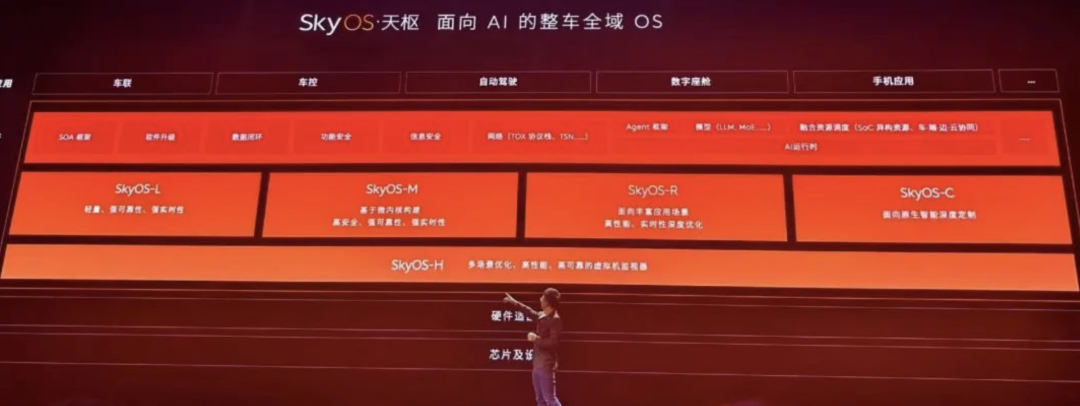
The arduous R&D process is evident. Four years and 23,000 person-months of investment entailed hundreds of engineers meticulously working on algorithm optimization, hardware adaptation, and security verification. Particularly in information security, smart cars, as mobile terminals, face cyber-attack risks, necessitating multi-layer protection capabilities within the system.
NIO began gradually deploying "SkyOS·TianShu" on Banyan models from 2022, with full deployment anticipated by 2024. Each step was accompanied by rigorous debugging and iterations. This groundbreaking endeavor was not only a technical challenge but also a test of team collaboration and resource integration.
The openness of "SkyOS·TianShu" is another significant innovation. NIO has opened it up to the industry, supporting adaptation to multi-brand models. For instance, LeDao's L60 has pioneered its application, with full implementation on NIO's et9.
02
Industry Impact and Strategic Importance of the Two Operating Systems
The launch of these two operating systems has profoundly impacted the strategic layout of China's auto industry. The efforts of these two emerging players have disrupted the status quo where Chinese auto OEMs were constrained in the operating system domain during the fuel vehicle era.
AUTOSAR, dominated by Western auto giants, long restricted Chinese auto OEMs with high licensing fees and lagging technical support. In the era of smart electric vehicles, the operating system has emerged as a core competitiveness, and self-research breakthroughs signify that Chinese auto OEMs are no longer reliant on "imported brains", achieving autonomous control from hardware to software.
These two emerging players have played the role of "pioneers", adopting full-stack self-research strategies – from chips to operating systems. Their converging paths indicate that autonomous operating systems have become an industry consensus. This competitive yet collaborative landscape will accelerate the collective advancement of Chinese auto OEMs in underlying technologies.
In the era of smart electric vehicles, the operating system's role is akin to iOS or Android in smartphones, directly influencing product differentiation and ecological competitiveness. This comes with significant challenges, including high R&D costs, pressure for technological iteration, and prolonged market validation cycles.
From a user perspective, the experience upgrade brought by "SkyOS·TianShu" is palpable.
The realization of features such as Flight Navigation and 4D Piloting transforms smart cars from mere transportation tools into mobile living spaces. This qualitative shift not only enhances user loyalty but also cements NIO's reputation in the high-end market.
However, to extend this advantage to a broader consumer base, the system requires further optimization in terms of cost and popularity, posing another challenge for NIO in the future.
Summary
It is indeed heartening to witness Chinese auto OEMs achieving breakthroughs in the underlying technologies of smart electric vehicles in the AI era.

